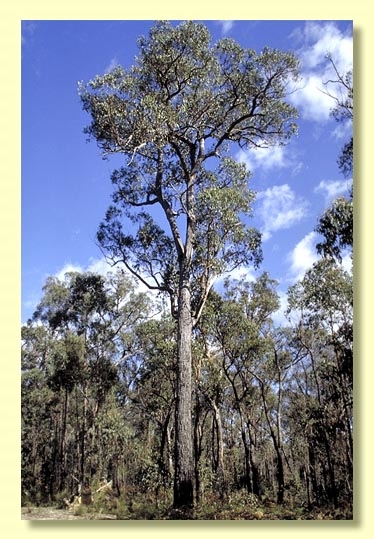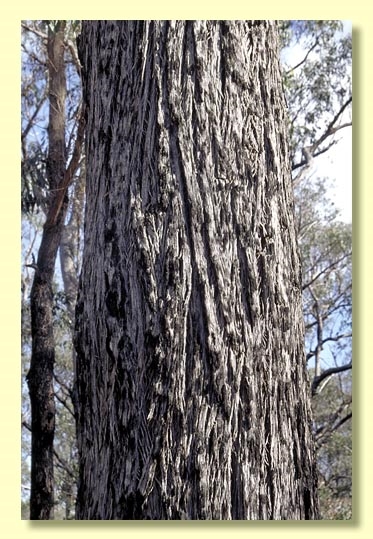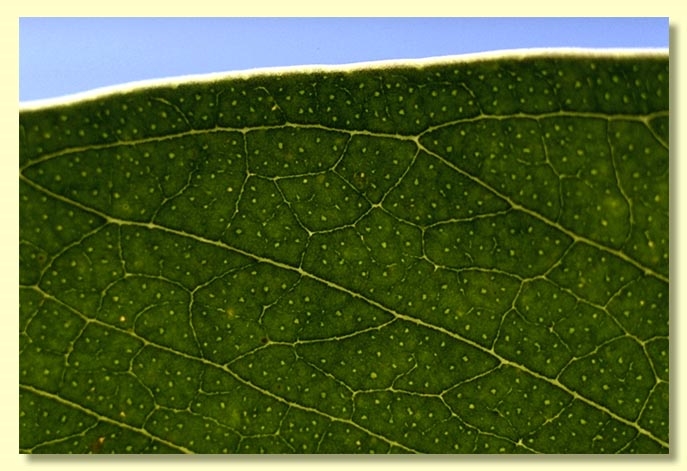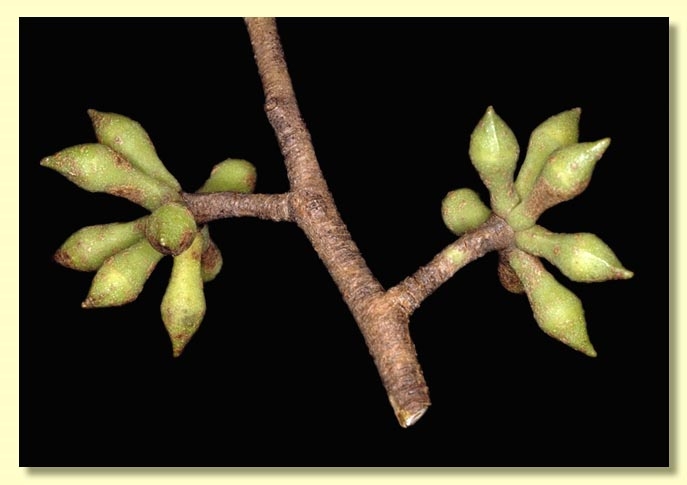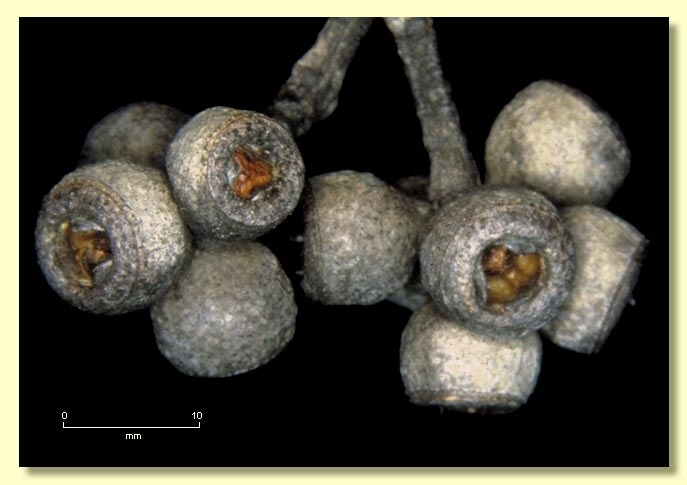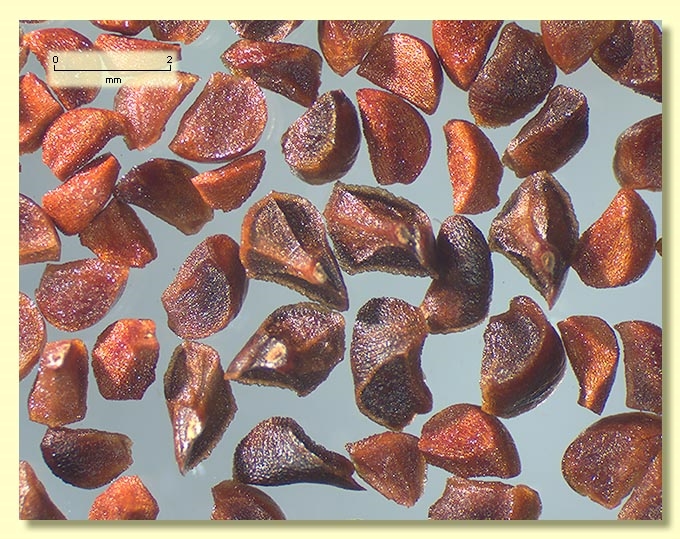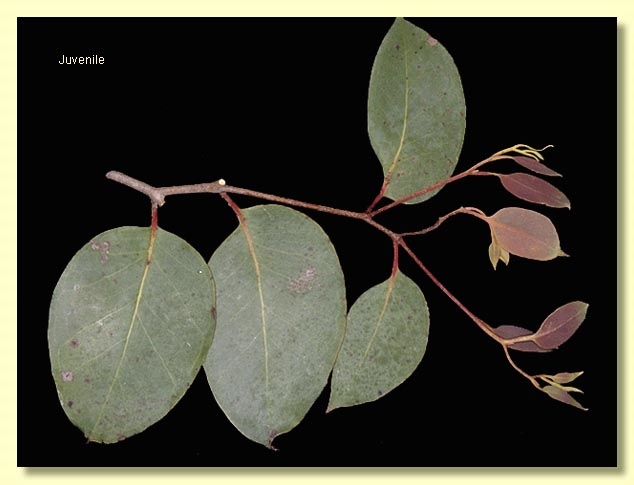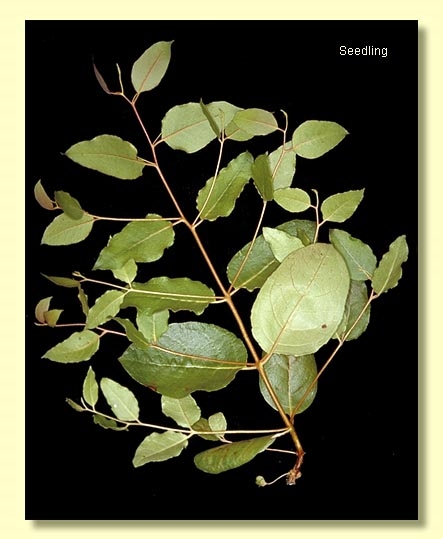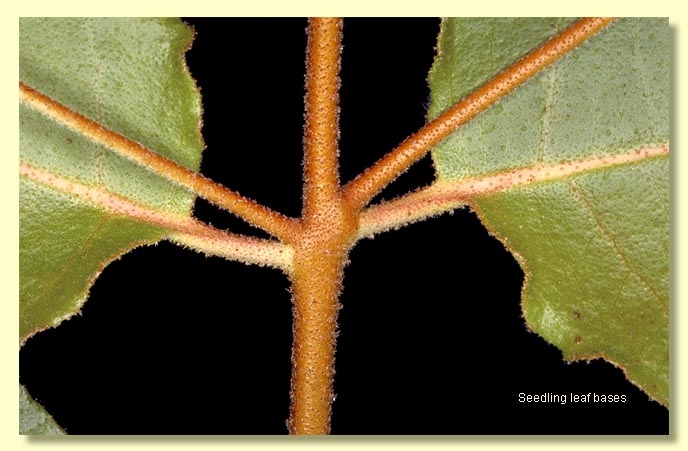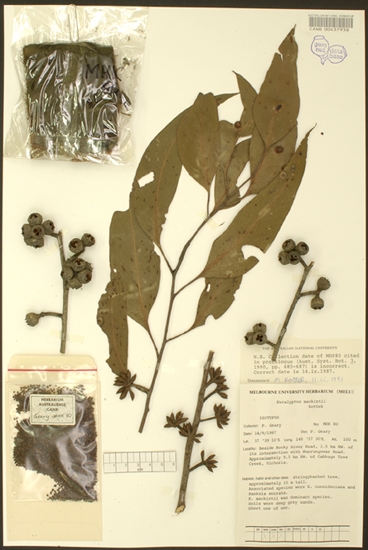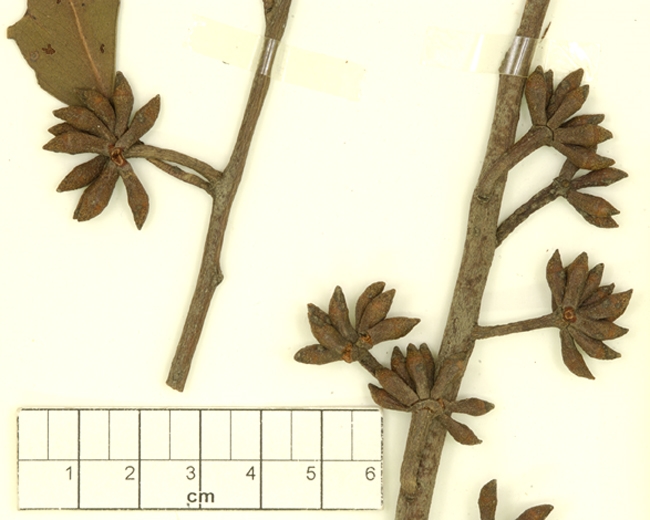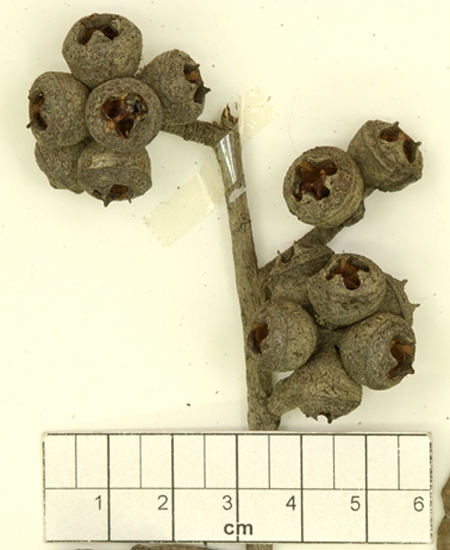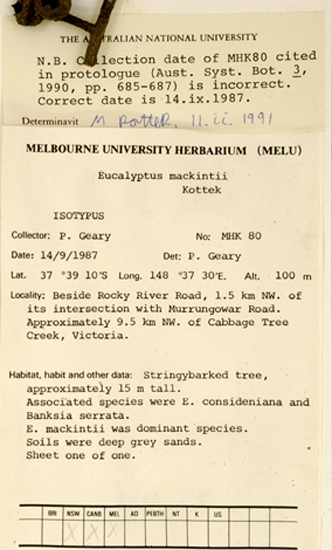Euclid - Online edition
Eucalyptus mackintii
Eucalyptus | Eucalyptus | Capillulus | Pachyphloius
Bark rough to small branches, stringy, grey to red-brown.
Juvenile growth (coppice or field seedlings to 50 cm): stem rounded in cross-section, scabrid at first; juvenile leaves always petiolate, opposite for 3 to 5 nodes then alternate, oblong to elliptical to ovate, 4.5–10.3 cm long, 3.5–9 cm wide, margin entire to slightly irregular, green to blue-green; stem, petiole and lamina scabrid until nodes 9 to 11 on seedlings, on field coppice only the lowest few (up to ca 6)pairs scabrid.
Crown blue-green.
Adult leaves alternate, petiole 1.3–2.8 cm long; blade broadly lanceolate to lanceolate to falcate, 8.5–23 cm long, 1.7–5.5 cm wide, base oblique, concolorous, slightly glossy or dull, green to blue-green, side-veins acute, sparsely to moderately reticulate, intramarginal vein parallel to and well removed from margin, oil glands small, island or obscure.
Inflorescence axillary unbranched, peduncles 0.8–2.2 cm long, buds in umbels of 7, 9 or 11, pedicels 0–0.5 cm long. Mature buds diamond-shaped to ovoid, 0.7–0.8 cm long, 0.3–0.5 cm wide, green, smooth or scurfy, with slight longitudinal angles, scar absent, operculum conical, stamens irregularly flexed, anthers reniform to cordate, versatile, dorsifixed, dehiscing by confluent slits, style long, stigma tapered, locules 3 or 4, the placentae each with 2 vertical ovule rows. Flowers white.
Fruit on pedicels 0–0.3 cm long, cup-shaped to hemispherical or truncate-globose, 0.5–0.7 cm long, 0.9–1.3 cm wide, disc level or slightly raised, valves 3 or 4, near rim level or slightly exserted.
Seeds dark brown, 1.5–3 mm long, pyramidal or obliquely pyramidal, dorsal surface smooth, hilum terminal.
Cultivated seedlings (measured at ca node 10): cotyledons reniform; stems rounded in cross-section, stellate-hairy at least on the lower internodes; leaves opposite, sessile, discolorous and stellate-hairy for ca 5–10 nodes then becoming alternate, shortly petiolate, more ovate and basally oblique, 3.5–15.5 cm long, 1.5–7.5 cm wide, lamina smooth after alternation, concolorous, glossy, green.
Flowering has been recorded in June.
A medium-sized stringybark tree known only from coastal areas south of Bruthen and foothills north and east of Orbost, Victoria, on poor sandy soil. Eucalyptus mackintii is fully rough-barked and has a crown that is bluish green, buds that are more or less ovoid but with slight angles, subsessile fruit with level or slightly raised disc with valves scarcely exserted. Juvenile leaves on field coppice are broad and are scarcely scabrid (lowest leaf pair only).
E. mackintii is distinguished among the stringybarks by the bluish green crown. It differs from E. macrorhyncha in having a conical (not beaked) operculum and fruit with a more or less level (not prominently raised) disc. Both E. globoidea and E. agglomerata differ in having crowded clusters of fruit and in having coppice growth scabrid for at least 0.5 m. E. baxteri differs from E. mackintii in having a green crown, obovoid buds without angles and fruit usually with a raised disc but, like E. mackintii, has juvenile growth scabrid for few nodes. The sparse oil gland pattern of E. mackintii adult leaves and the angled buds suggest a relationship with E. youmanii of northern New South Wales.
MORE ABOUT STRINGYBARKS

